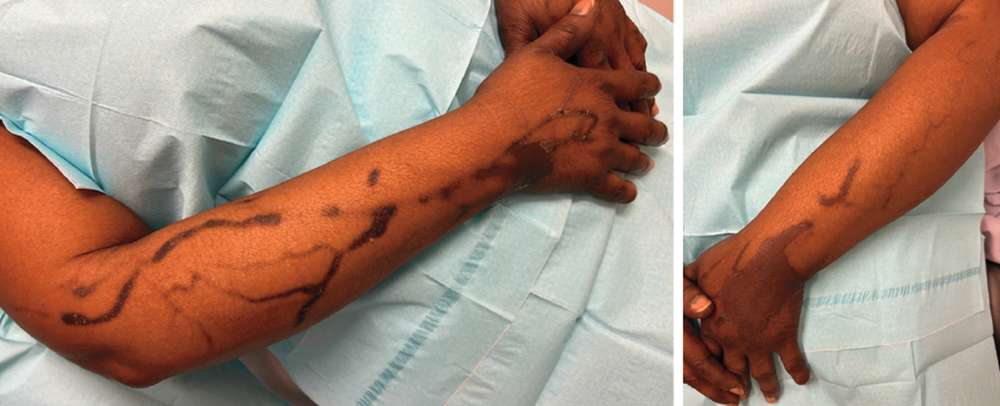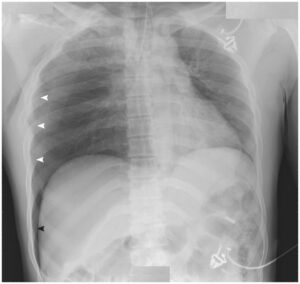This article is an answer to the Case – Nonpruritic Hyperpigmented Plaques
Six weeks before presentation, she had started palliative chemotherapy with gemcitabine and docetaxel, which had been administered through peripheral intravenous catheters. A diagnosis of docetaxel-associated serpentine supravenous hyperpigmentation was made.
Serpentine supravenous hyperpigmentation is a cutaneous side effect of several intravenous chemotherapy agents, including docetaxel, vinorelbine, and — most commonly — fluorouracil.
The mechanism of skin hyperpigmentation remains unclear, but the reaction is benign; the underlying veins remain patent. The reaction can be avoided with the use of a central venous catheter for drug infusion.
In this patient, a central venous catheter was placed for subsequent administration of chemotherapy. At a follow-up visit 2 months later, the rash had abated.


